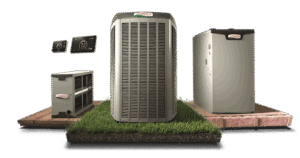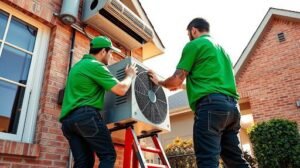Condensation is a common issue in residential, commercial, and industrial settings, often leading to moisture buildup, structural damage, and reduced efficiency in HVAC systems. Addressing condensation effectively requires understanding its causes and implementing the right solutions to control and eliminate excess moisture. Tools like condensate pumps play a vital role in managing condensation efficiently, ensuring that systems and spaces remain functional and damage-free.
What Causes Condensation?
Condensation occurs when warm, moist air comes into contact with a cooler surface, causing water vapor to condense into liquid form. This process is particularly common in areas with temperature fluctuations or high humidity levels. Common culprits of condensation include:
- HVAC Systems: Air conditioners and refrigeration units naturally produce condensation as they cool the air.
- Pipes and Ductwork: Uninsulated pipes and ducts can attract condensation in humid environments.
- Windows and Walls: Poor insulation can lead to condensation on cold surfaces, especially during winter months.
Left unmanaged, condensation can lead to mold growth, water damage, and decreased system efficiency.
Tools and Techniques for Managing Condensation
Addressing condensation effectively involves a combination of prevention, mitigation, and removal strategies. Here are some efficient solutions to keep moisture under control:
1. Install Condensate Pumps
Condensate pumps are essential for removing excess moisture from HVAC systems, especially in spaces where gravity drainage is not possible. These pumps collect and transport condensate water away from the system, preventing water buildup and potential damage.
Benefits of Condensate Pumps:
- Prevent water pooling around HVAC systems.
- Protect floors, ceilings, and walls from moisture-related damage.
- Enhance system efficiency by ensuring uninterrupted operation.
- Reduce the risk of mold and mildew growth.
Condensate pumps are an indispensable tool in managing condensation, particularly in commercial and industrial settings.
2. Improve Insulation
Proper insulation can help regulate surface temperatures, reducing the likelihood of condensation. Key areas to insulate include:
- Pipes and ductwork
- Exterior walls
- Windows and doors
Using high-quality insulation materials minimizes temperature differentials and prevents moisture from forming.
3. Use Dehumidifiers
Dehumidifiers remove excess moisture from the air, making them ideal for controlling humidity levels in enclosed spaces. By maintaining a balanced indoor environment, dehumidifiers can significantly reduce condensation.
Tips for Using Dehumidifiers:
- Choose the right size for the space.
- Place the unit in areas prone to moisture, such as basements or bathrooms.
- Regularly empty and clean the water collection reservoir.
4. Ventilation and Airflow
Improved ventilation helps reduce humidity levels by promoting airflow and preventing moisture buildup. Strategies include:
- Installing exhaust fans in kitchens and bathrooms.
- Opening windows when weather permits.
- Using ceiling fans or portable fans to circulate air.
Proper ventilation ensures that moist air is dispersed rather than condensed on cool surfaces.
5. Seal Leaks and Cracks
Air leaks in windows, doors, or walls can lead to drafts that encourage condensation. Sealing gaps and cracks with weatherstripping or caulking can help maintain consistent indoor temperatures and reduce moisture formation.
Preventative Maintenance for Long-Term Results
Proactive maintenance is essential for preventing condensation issues before they arise. Here’s how to keep systems and spaces moisture-free:
Regularly Inspect HVAC Systems
Check for leaks, clogs, and signs of water pooling around air conditioners or furnaces. Ensure that condensate pumps are functioning correctly and clean the pump reservoir periodically.
Monitor Humidity Levels
Use a hygrometer to measure indoor humidity levels. Aim to keep levels between 30-50% for optimal comfort and to prevent condensation.
Maintain Proper Drainage
Ensure that drainage systems, including gutters and downspouts, are clear of debris and directing water away from the property.
Clean Surfaces Regularly
Wipe down areas prone to condensation, such as windowsills and pipes, to prevent mold growth and moisture accumulation.
The Impact of Efficient Condensation Management
Effective condensation management is about more than protecting surfaces—it’s about creating healthier, more efficient spaces. By leveraging tools like condensate pumps, improving insulation, and maintaining proper airflow, you can prevent the damaging effects of moisture and maintain the integrity of your systems and structures. Whether in a residential or industrial setting, these solutions ensure that condensation remains under control, fostering a clean and comfortable environment
Read more On Homethreadsorg







